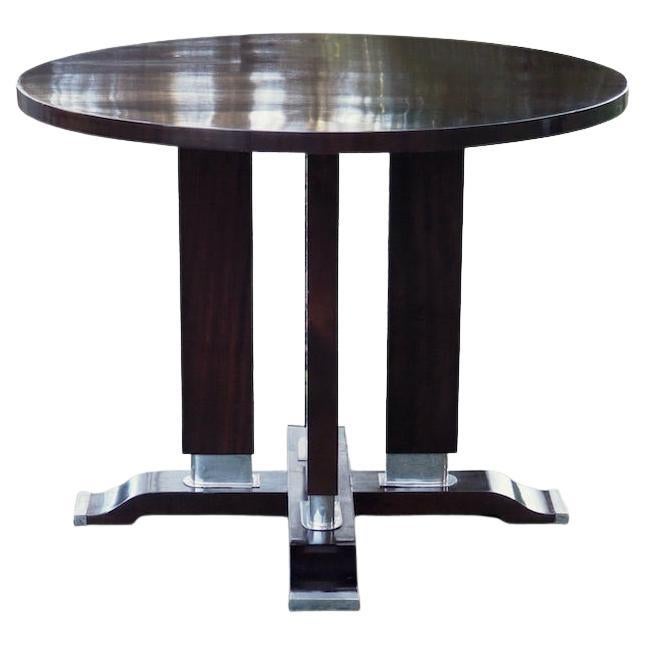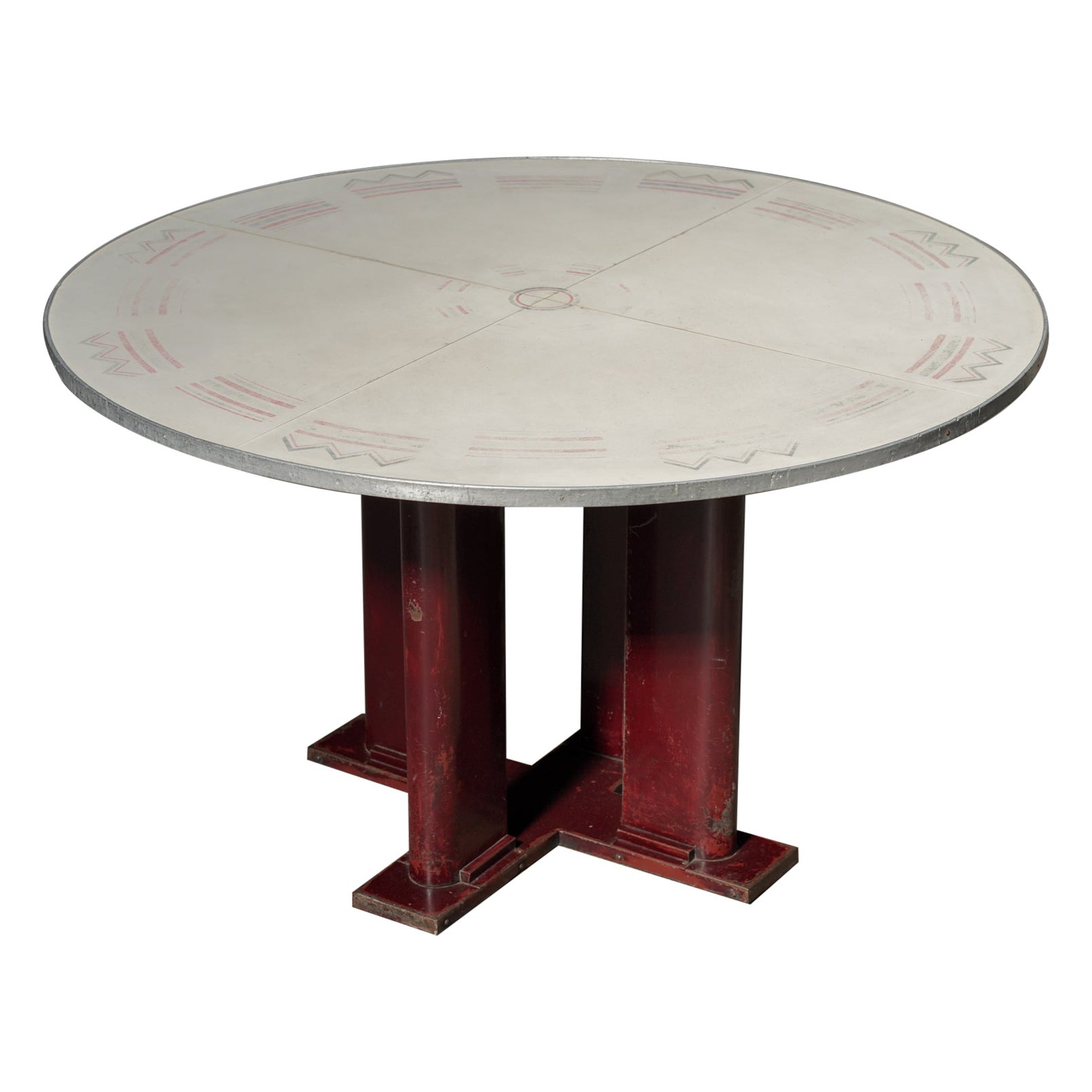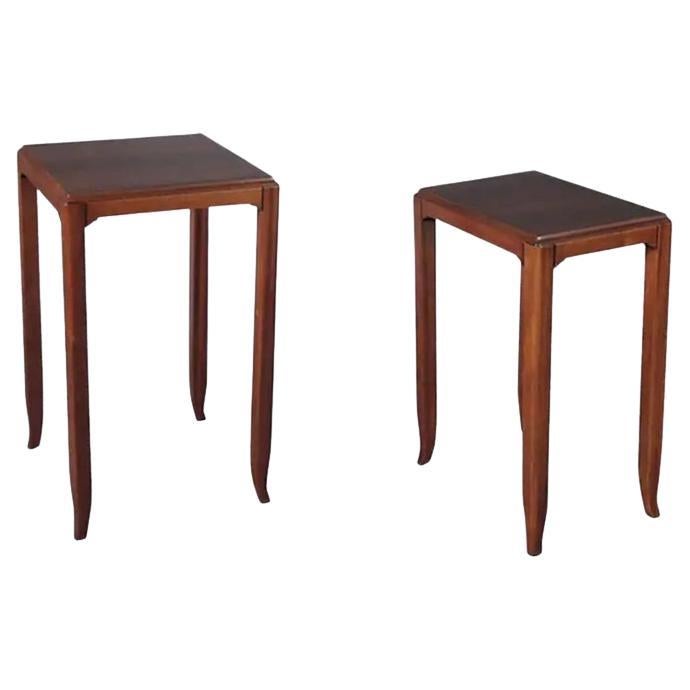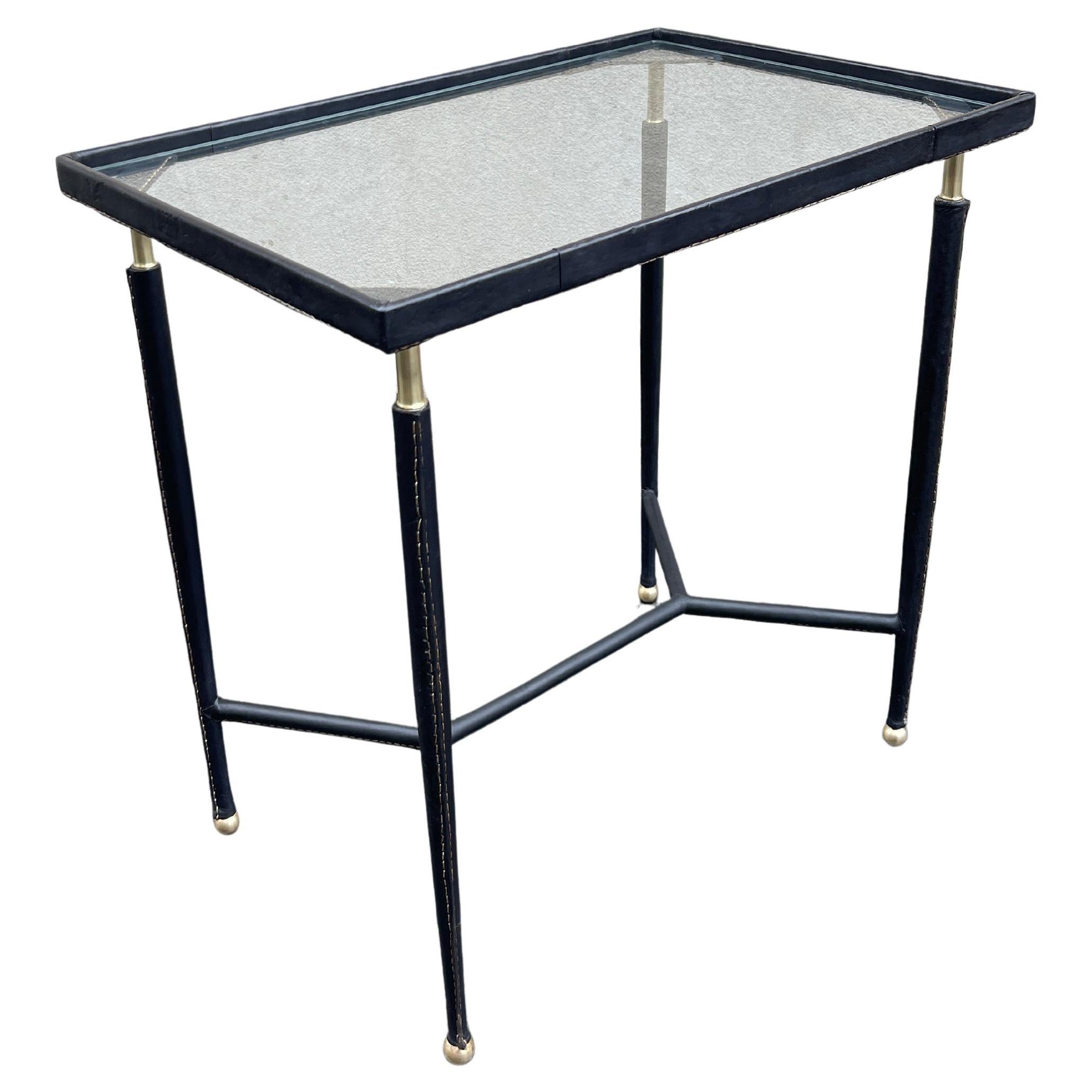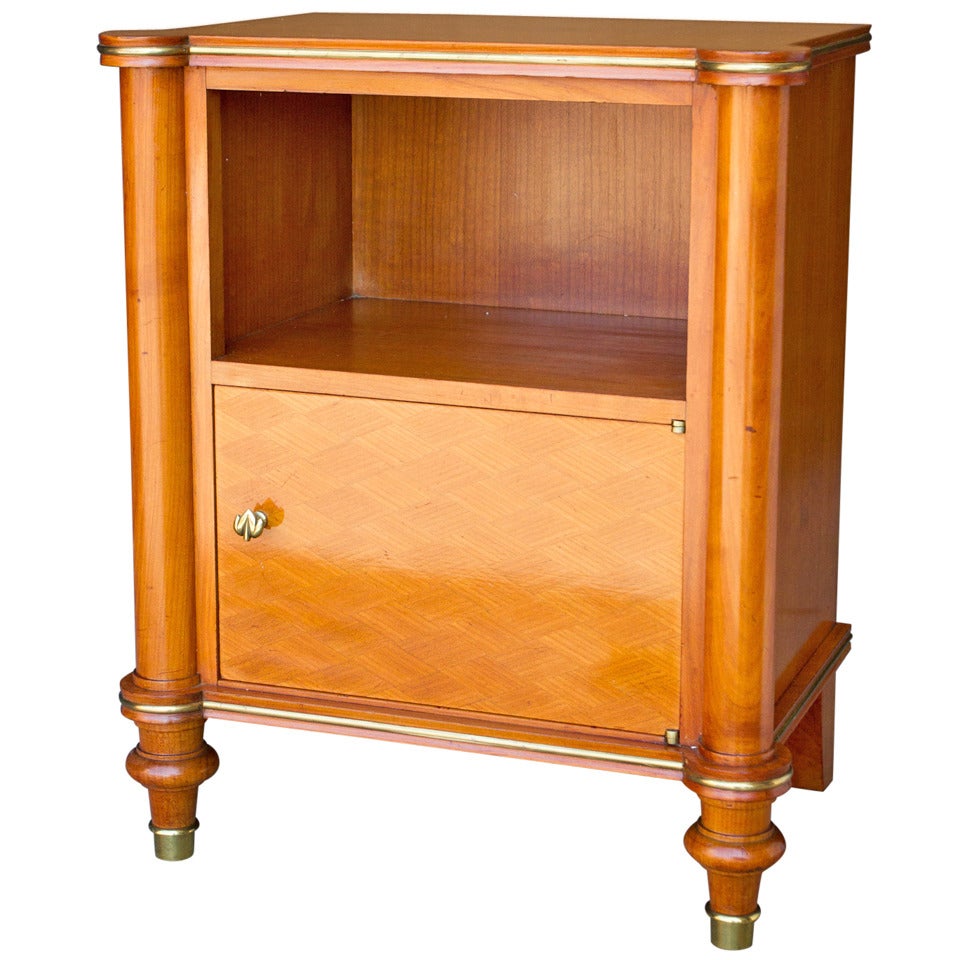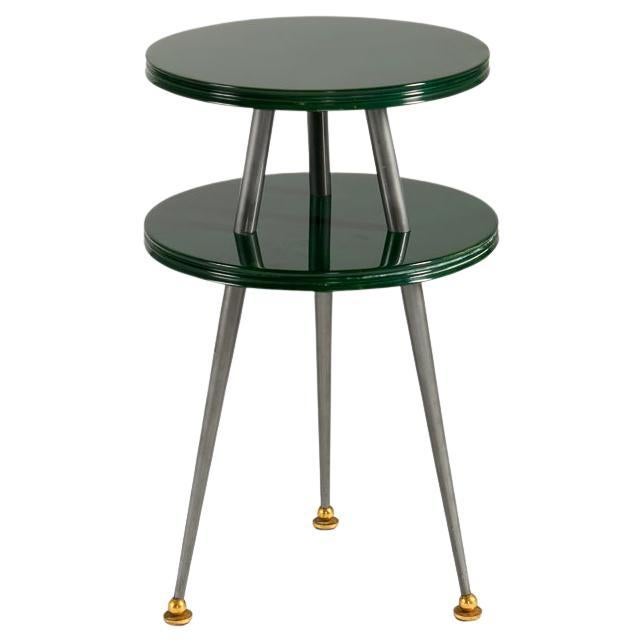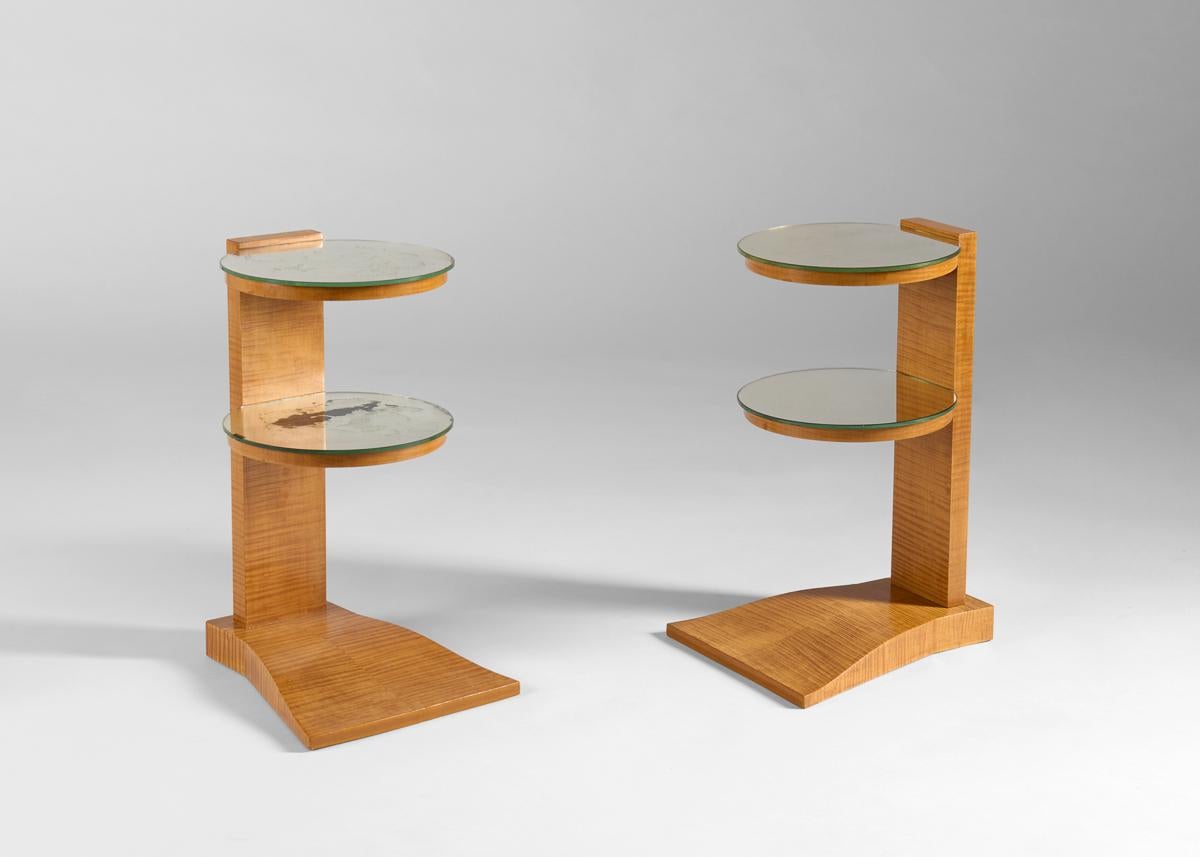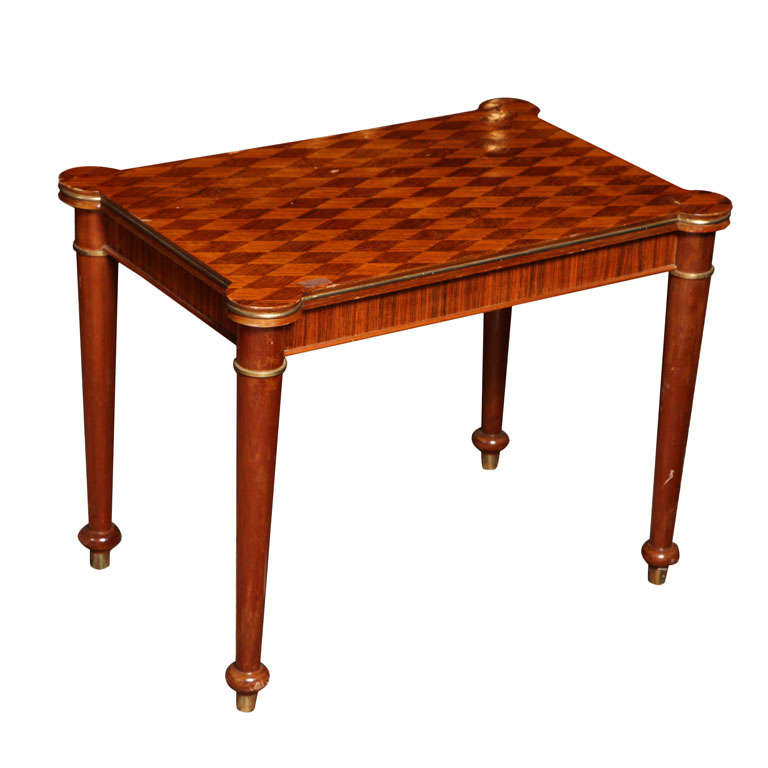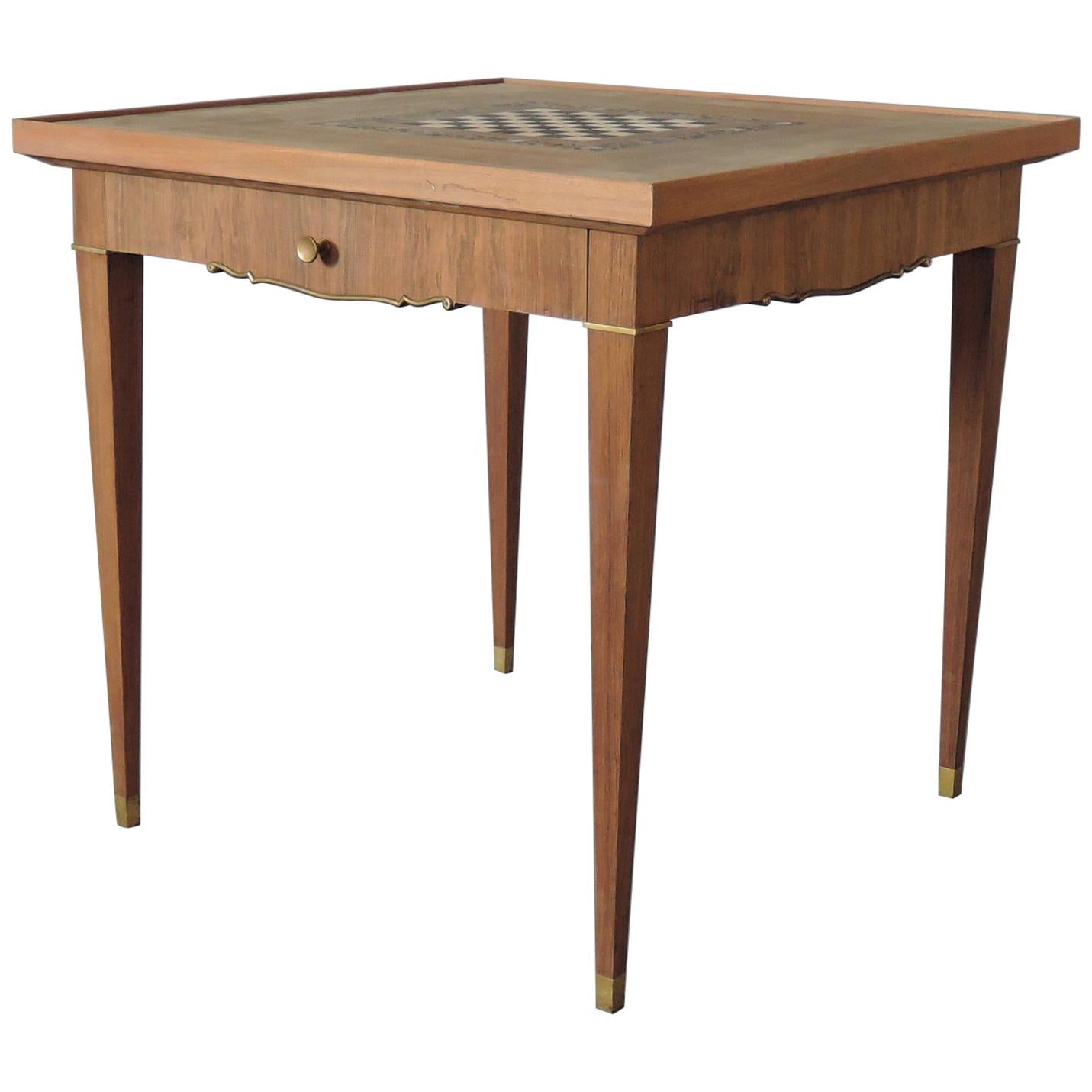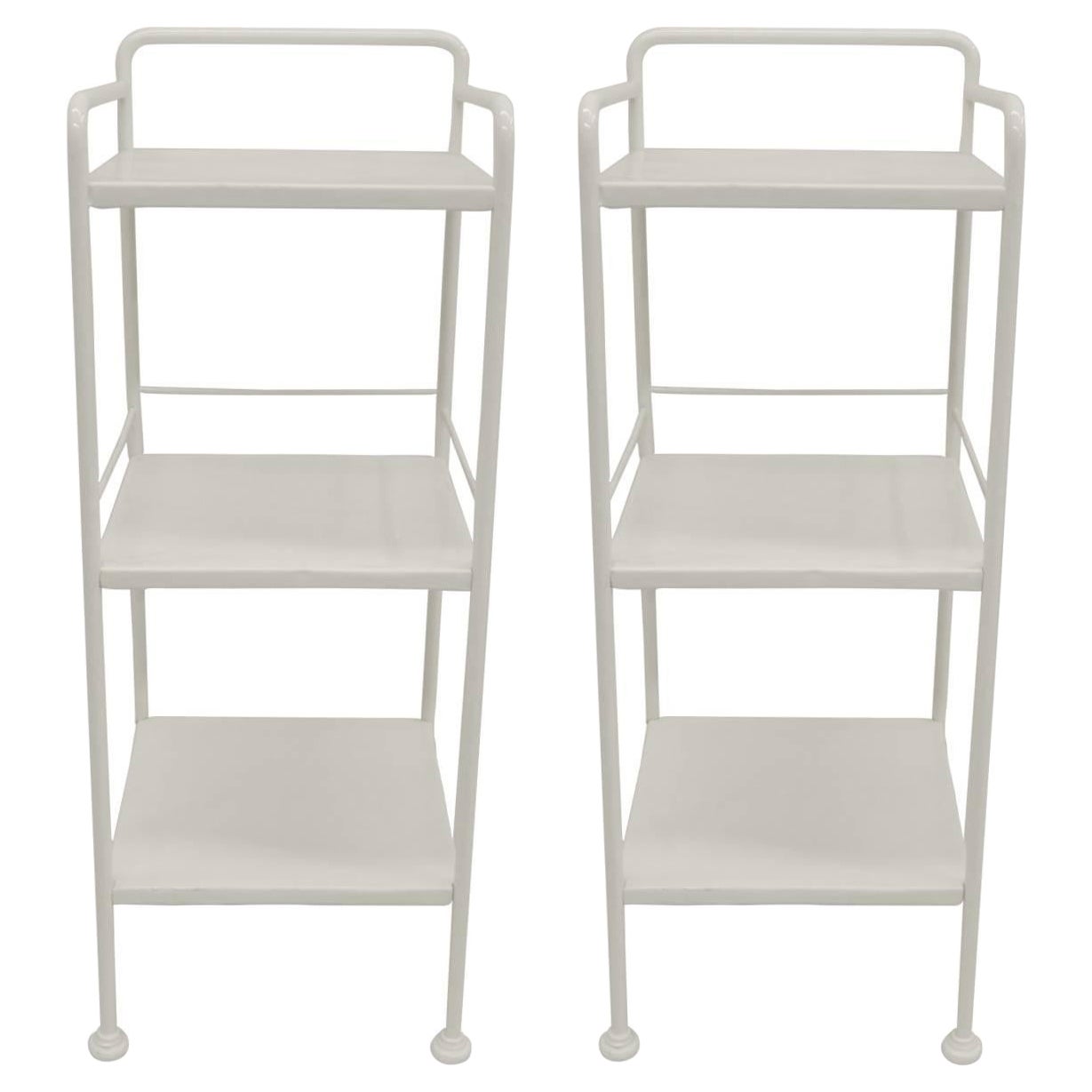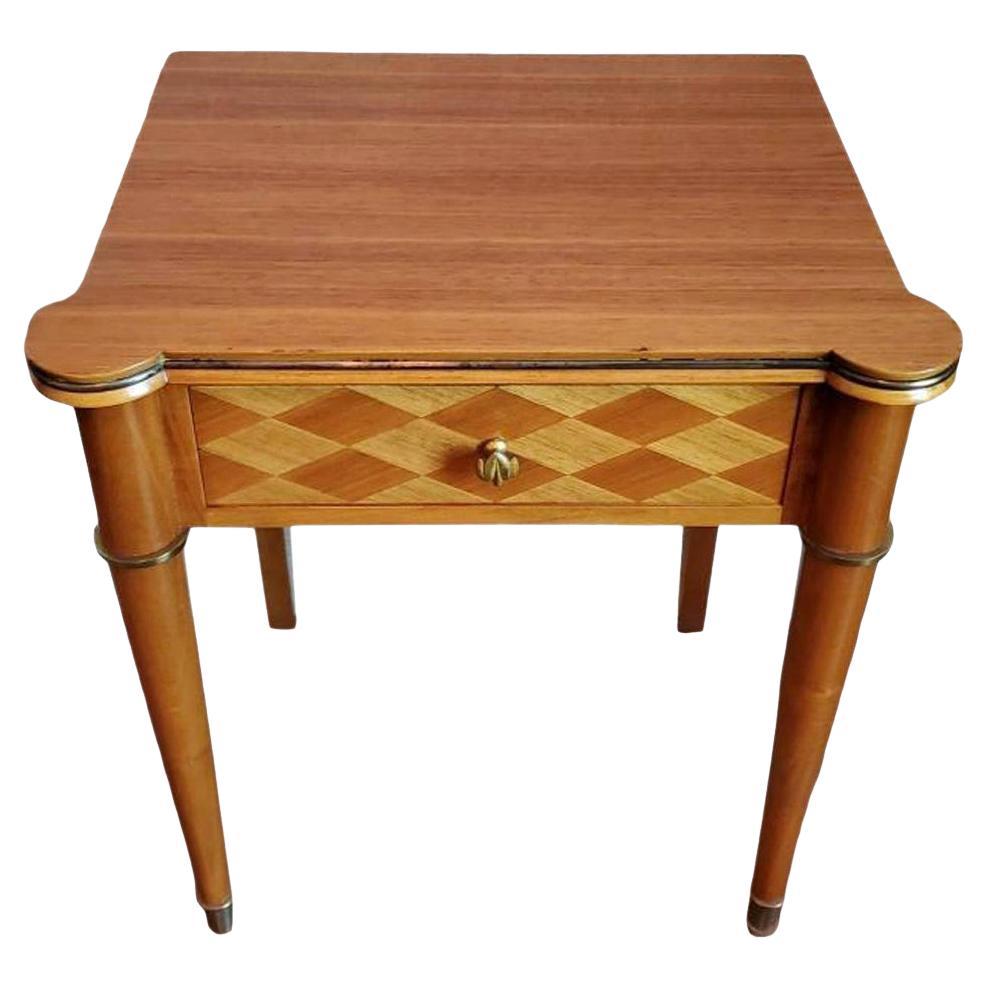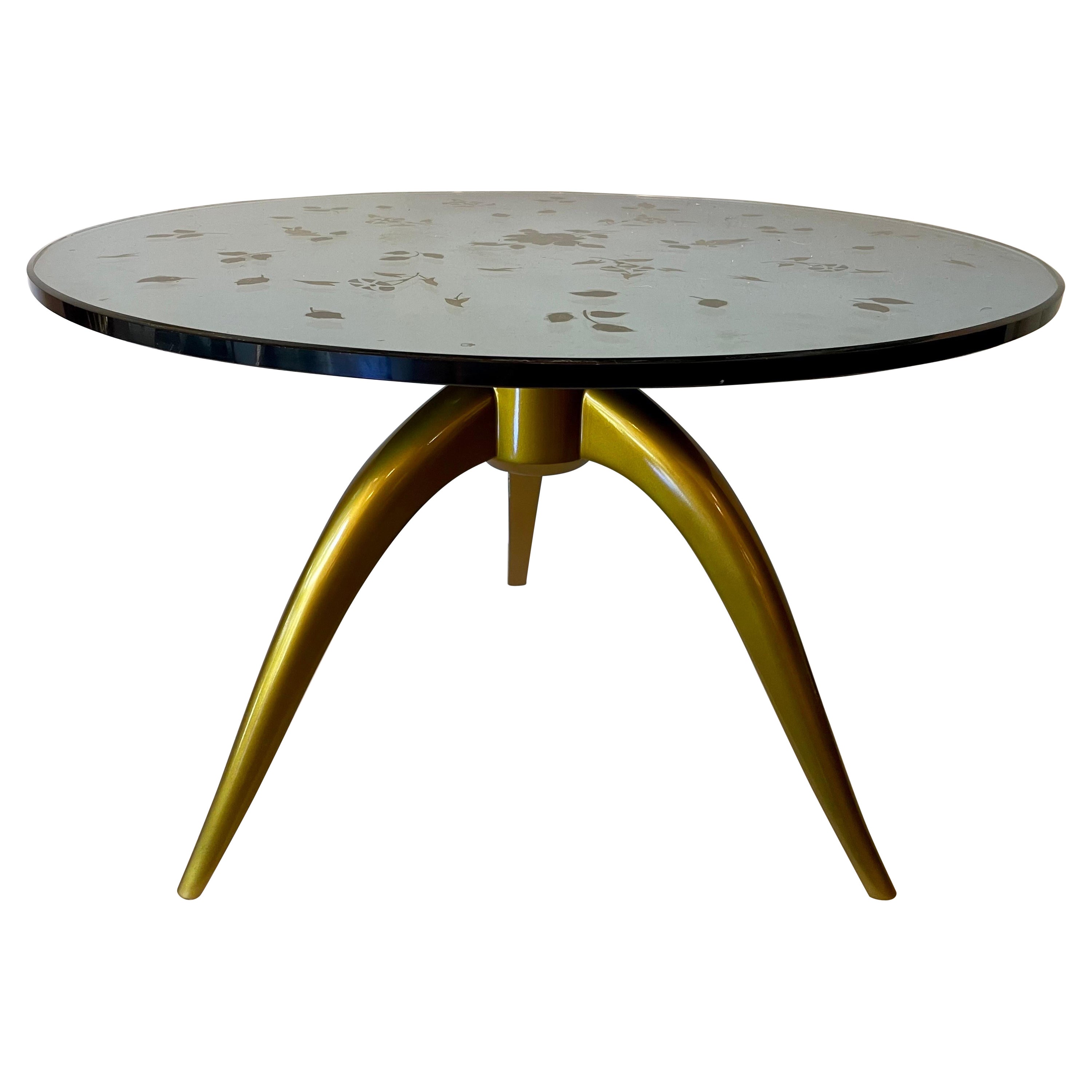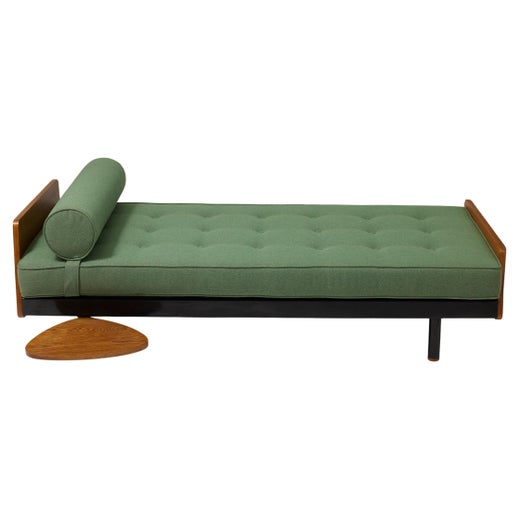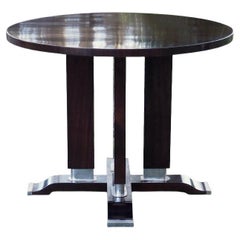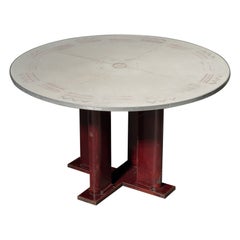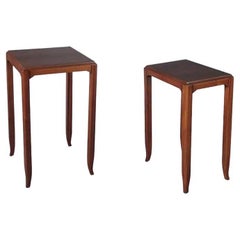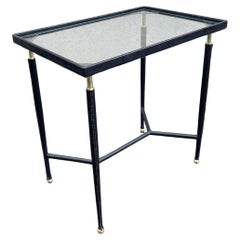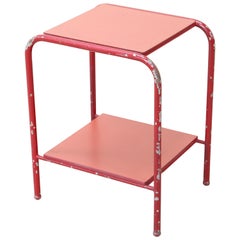
Side Table by Jean Prouvé and Jules Leleu from France, 1936
View Similar Items
Side Table by Jean Prouvé and Jules Leleu from France, 1936
About the Item
- Creator:Jean Prouvé (Workshop/Studio, Designer),Jules Leleu (Designer)
- Dimensions:Height: 24.41 in (62 cm)Width: 19.69 in (50 cm)Depth: 15.36 in (39 cm)
- Materials and Techniques:
- Place of Origin:
- Period:
- Date of Manufacture:1934
- Condition:Wear consistent with age and use.
- Seller Location:Altwies, LU
- Reference Number:Seller: AS1091stDibs: LU1419217137312
Jules Leleu
A designer and ensemblier, Jules Leleu was one of the key authors of the Art Deco movement. While he did not win the fame of such contemporaries as Émile-Jacques Ruhlmann and Jean-Michel Frank, Leleu had a longer career and was easily their peer in the conception of trim, refined furniture forms and in the use of the opulent materials — from lacquer and ivory to sharkskin and exotic woods — that were a keynote of haute Art Deco design.
Leleu was born into a family of artisans and decorators. Their firm, Maison Leleu, had existed since the 18th century and Jules would guide it through much of the 20th. (The business lasted until 1973, headed at the end by Jules's children.) He studied architecture, served as an aviator in World War I, and after the conflict took up design full-time.
Leleu presented work at the 1925 exposition in Paris that gave us the term Art Deco, and the Metropolitan Museum of Art in New York purchased a burl amboyna wood commode by Leleu directly from the show.
As the desks, dining tables and other furniture on 1stDibs show, Leleu was a stickler for precision craft and preferred to let his materials do the talking — his furniture is generally spare and sleek; its presence is established by figuring (or patterning/graining) in the wood and the occasional marquetry medallion. He had a keen eye for currents in design and an adaptable sensibility.
Maison Leleu would embrace many of the starker forms of modernism after the 1940s, as well as new materials such as artificial lacquer and plastics (then considered cutting-edge rather than cheap). Jules Leleu is a guiding light of 20th-century modernism: a man whose work represents both a devotion to traditional handiwork and an appreciation for the next wave in design.
Find Jules Leleu tables, sideboards, dining chairs and other furniture on 1stDibs.
Jean Prouvé
Engineer and metalsmith, self-taught designer and architect, manufacturer and teacher, Jean Prouvé was a key force in the evolution of 20th-century French design, introducing a style that combined economy of means and stylistic chic. Along with his frequent client and collaborator Le Corbusier and others, Prouvé, using his practical skills and his understanding of industrial materials, steered French modernism onto a path that fostered principled, democratic approaches to architecture and design.
Prouvé was born in Nancy, a city with a deep association with the decorative arts. (It is home, for example, to the famed Daum crystal manufactory.) His father, Victor Prouvé, was a ceramist and a friend and co-worker of such stars of the Art Nouveau era as glass artist Émile Gallé and furniture maker Louis Majorelle. Jean Prouvé apprenticed to a blacksmith, studied engineering, and produced ironwork for such greats of French modernism as the architect Robert Mallet-Stevens. In 1931, he opened the firm Atelier Prouvé. There, he perfected techniques in folded metal that resulted in his Standard chair (1934) and other designs aimed at institutions such as schools and hospitals.
During World War II, Prouvé was a member of the French Resistance, and his first postwar efforts were devoted to designing metal pre-fab housing for those left homeless by the conflict. In the 1950s, Prouvé would unite with Charlotte Perriand and Pierre Jeanneret (Le Corbusier’s cousin) on numerous design projects. In 1952, he and Perriand and artist Sonia Delaunay created pieces for the Cité Internationale Universitaire foundation in Paris, which included the colorful, segmented bookshelves that are likely Prouvé’s and Perriand’s best-known designs. The pair also collaborated on 1954’s Antony line of furniture, which again, like the works on 1stDibs, demonstrated a facility for combining material strength with lightness of form.
Prouvé spent his latter decades mostly as a teacher. His work has recently won new appreciation: in 2008 the hotelier Andre Balazs purchased at auction (hammer price: just under $5 million) the Maison Tropicale, a 1951 architectural prototype house that could be shipped flat-packed, and was meant for use by Air France employees in the Congo. Other current Prouvé collectors include Brad Pitt, Larry Gagosian, Martha Stewart and the fashion designer Marc Jacobs.
The rediscovery of Jean Prouvé — given not only the aesthetic and practical power of his designs but also the social conscience his work represents — marks one of the signal “good” aspects of collecting vintage 20th-century design. An appreciation of Prouvé is an appreciation of human decency.
Find antique Jean Prouvé chairs, tables, chaise longues and other furniture on 1stDibs.
You May Also Like
Vintage 1930s French Art Deco Center Tables
Metal
Vintage 1930s French Tables
Metal, Aluminum
Vintage 1950s French Mid-Century Modern Side Tables
Mahogany, Rosewood
Vintage 1950s Side Tables
Brass
Vintage 1940s French Art Deco Side Tables
Mahogany
Vintage 1960s French Mid-Century Modern Side Tables
Bronze
